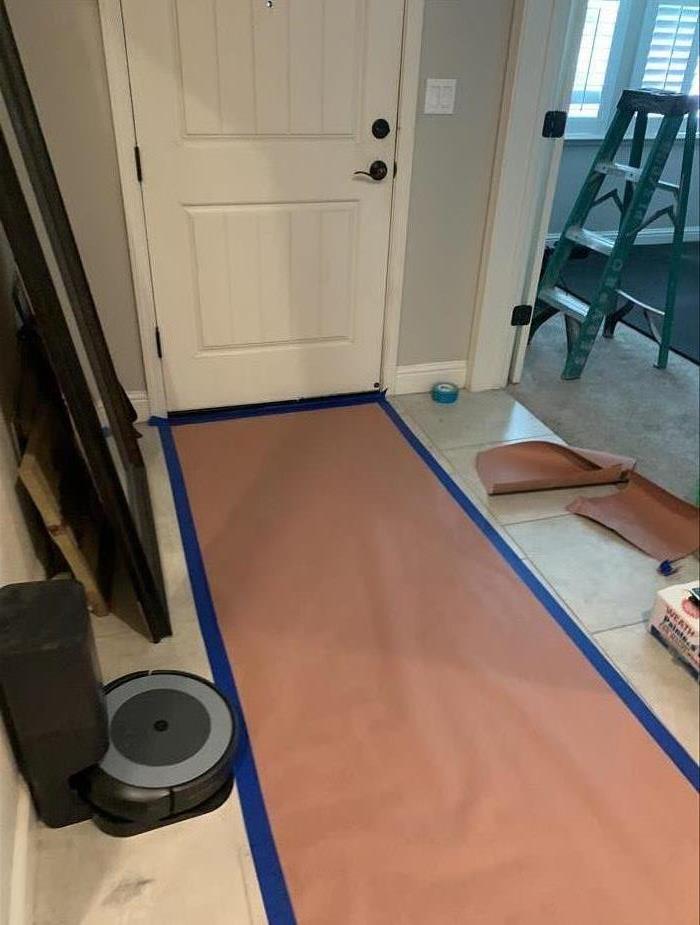Recent Mold Remediation Posts
Mold in Schools: Understanding the Risks and How to Prevent It
10/16/2024 (Permalink)
Mold in schools is a significant concern for both students and staff, as it can thrive in moist environments and lead to structural and operational challenges if left unchecked. Though the focus in mold-related discussions often centers around health risks, there are additional concerns about the impact on the building’s integrity and the overall learning environment. Understanding the causes of mold in schools, how to prevent it, and when to seek professional help, such as the services offered by SERVPRO®, is essential to maintain a safe and comfortable space for education.
Causes of Mold in Schools
Mold is a fungus that thrives in areas with excessive moisture. Schools, like other buildings, are vulnerable to mold growth for several reasons:
- Poor Ventilation: Classrooms, gymnasiums, and locker rooms often have insufficient ventilation, creating damp, humid conditions where mold can thrive. This is particularly true in older school buildings that may not have modern HVAC systems.
- Leaking Roofs or Windows: School roofs and windows that are not properly sealed can allow water to seep in, creating the ideal conditions for mold to grow. If water damage is not addressed immediately, mold can spread quickly.
- Plumbing Issues: Bathrooms, kitchens, and science labs in schools may have leaking pipes or faulty plumbing, leading to water accumulation in hidden areas such as behind walls or under floors.
- High Humidity Levels: In regions with high humidity, moisture levels in schools can remain consistently high, particularly in areas like basements, attics, or crawl spaces.
Risks of Mold in Schools
A major risk is the structural damage it can cause. Mold feeds on organic materials like wood, paper, and drywall, which are commonly found in school buildings. If mold grows unchecked, it can weaken walls, floors, and ceilings, requiring extensive and costly repairs.
Additionally, mold in classrooms and common areas can affect air quality, which may impact the overall environment for learning. Musty odors and visible mold growth can create distractions and discomfort for students and teachers alike.
Prevention Measures for Mold in Schools
Preventing mold in schools requires a proactive approach to managing moisture and ensuring proper building maintenance. Here are some key prevention strategies:
- Regular Inspections: Conduct routine checks of areas prone to moisture buildup, including bathrooms, kitchens, and basements. Look for signs of water damage such as staining, warping, or peeling paint.
- Address Leaks Promptly: Whether it's a roof leak or a plumbing issue, repairs should be made immediately to prevent water accumulation. This also means inspecting windows and doors to ensure they are properly sealed.
- Maintain HVAC Systems: Ensure that ventilation systems are working properly to keep humidity levels under control. Schools should also clean air ducts regularly to avoid mold buildup.
- Control Humidity: Use dehumidifiers in areas where moisture levels tend to rise, especially in humid climates. Keeping the indoor humidity below 60% is crucial in preventing mold growth.
- Educate Staff and Students: Make sure teachers, custodians, and maintenance staff are trained to recognize early signs of mold and understand the importance of reporting leaks or water damage.
SERVPRO: Mold Remediation for Schools
If mold is discovered in your school, it’s important to seek professional help to ensure complete and effective remediation. SERVPRO specializes in mold remediation services, utilizing advanced techniques to identify, contain, and eliminate mold colonies. With industry expertise and proper equipment, SERVPRO can restore mold-affected areas in schools to safe conditions while addressing underlying moisture issues to prevent future occurrences.
By investing in mold prevention and remediation strategies, schools can protect both their structural integrity and the learning environment, ensuring students and staff have a safe and healthy space in which to thrive. If your school is facing mold issues, don’t hesitate to contact SERVPRO of Pleasanton/Dublin for expert assistance in mold removal and prevention.
How Does Mold Get Into the HVAC System?
7/16/2024 (Permalink)
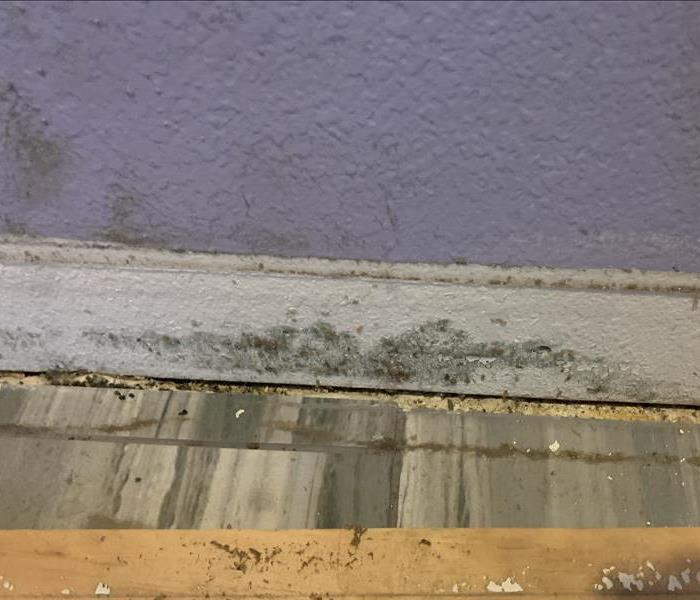 Mold in your HVAC system can cause serious damage to your home.
Mold in your HVAC system can cause serious damage to your home.
Mold in your HVAC system is a serious problem that can cause extensive property damage and impact your home's air quality. Understanding how mold gets into the HVAC system is crucial for prevention and effective remediation. In this blog, we will explore the causes of mold growth in HVAC systems and offer some tips to prevent it.
What Causes Mold Growth in HVAC Systems?
Mold spores are a natural part of the environment and can easily enter your home. Once inside, they can find their way into your HVAC (Heating, Ventilation, and Air Conditioning) system. Here are some common ways mold can infiltrate your HVAC system:
1. Moisture Buildup
One of the primary factors for mold growth is moisture. HVAC systems can accumulate moisture through condensation. When warm, humid air passes over the cold evaporator coils, condensation forms. If this moisture isn't properly drained, it can create a perfect environment for mold growth.
2. Dirty Filters
Dirty or clogged filters can restrict airflow, causing moisture to build up in the system. When filters aren't changed regularly, dust and debris can accumulate, providing nutrients for mold spores. Over time, these spores can grow into mold colonies.
3. Poor Ventilation
Proper ventilation is crucial for preventing mold. When there is poor ventilation in your HVAC system, moisture can become trapped. Stagnant air combined with moisture creates an ideal breeding ground for mold. Ensuring your system has adequate ventilation can help reduce this risk.
4. Leaking Ducts
Leaks in your ductwork can allow humid air to enter the system. When this humid air comes into contact with cooler surfaces within the HVAC system, it can cause condensation. This moisture can then lead to mold growth. Regular inspection and maintenance of ductwork can help prevent leaks and moisture buildup.
5. Standing Water
Standing water in any part of your HVAC system can lead to mold growth. This can occur in drip pans, condensate lines, or other areas where water may accumulate. Ensuring that these components are regularly cleaned and maintained is essential.
Signs of Mold in Your HVAC System
Recognizing the signs of mold in your HVAC system early can help prevent extensive damage and health issues. Some common indicators include:
- Musty odors coming from your vents.
- Visible mold growth on vents or around the HVAC unit.
- Increased allergy symptoms or respiratory issues among household members.
- Frequent headaches, nausea, or fatigue.
If you notice any of these signs, it’s essential to address the issue as quickly as possible.
Preventing Mold in Your HVAC System
Prevention is key when it comes to mold in your HVAC system. Here are some tips to help keep your system mold-free:
- Regular Maintenance
Regular maintenance of your HVAC system is crucial. This includes cleaning coils, drip pans, and other components where moisture can accumulate. A professional HVAC technician can perform these tasks and identify any potential issues.
- Change Filters Regularly
Changing your HVAC filters regularly is one of the easiest ways to prevent mold. Clean filters ensure proper airflow and reduce the chance of moisture buildup. Check your filters monthly and replace them as needed.
- Ensure Proper Ventilation
Make sure your HVAC system is properly ventilated. This can help reduce moisture buildup and prevent mold growth. If necessary, consider installing a dehumidifier to control humidity levels in your home.
- Inspect Ductwork
Regularly inspect your ductwork for leaks and other issues. Seal any leaks promptly to prevent humid air from entering the system. Properly insulated ducts can also help maintain consistent temperatures and reduce condensation.
- Keep the Area Dry
Ensure that the area around your HVAC system is dry. Fix any leaks or water issues promptly, and use a dehumidifier in damp areas to keep humidity levels in check.
Mold in your HVAC system can cause serious damage to your home. By understanding how mold gets into the system and taking preventive measures, you can keep your HVAC system mold-free. Regular maintenance, proper ventilation, and prompt attention to moisture issues are key to preventing mold growth. If you suspect mold in your HVAC system, contact a professional mold remediation service like SERVPRO® to ensure safe and effective removal.
8 Tips for Keeping your Vacation Home Mold Free
3/14/2024 (Permalink)
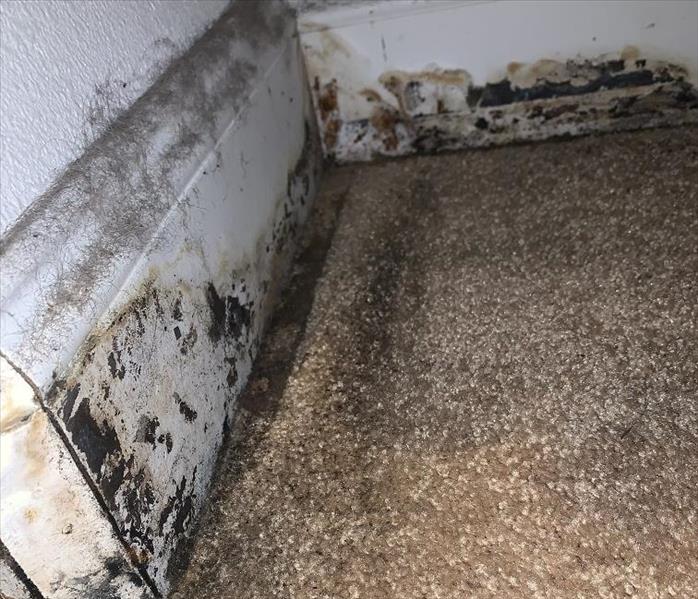 Owning a vacation home is a joy, but keeping it mold-free, especially during periods of vacancy, can be a concern.
Owning a vacation home is a joy, but keeping it mold-free, especially during periods of vacancy, can be a concern.
Owning a vacation home is a joy, but keeping it mold-free, especially during periods of vacancy, can be a concern. We've got you covered with eight practical tips to maintain a mold-free vacation home throughout the year. These simple yet effective measures will help you return to your retreat worry-free.
- Humidity Control
Invest in a dehumidifier to regulate indoor humidity levels, especially during warmer seasons. Mold thrives in damp environments, so keeping humidity in check is a crucial preventive step.
- Prioritize Ventilation
Ensure good ventilation by utilizing exhaust fans and leaving windows open when possible. Adequate airflow helps minimize moisture buildup, creating an environment less conducive to mold growth.
- Regular Cleaning Routine
Dust and dirt can create a breeding ground for mold. Establish a routine for regular cleaning, even during the off-season, to prevent the accumulation of particles that may contribute to mold issues.
- Leak Inspection
Conduct regular inspections for leaks both inside and outside your vacation home. To prevent mold from growing and spreading, promptly fix any leaks you find as quickly as possible.
- Roof Check-Up
Regularly inspect your vacation home's roof for signs of damage. A well-maintained roof is your first line of defense against water leaks, helping to stave off potential mold concerns.
- Tighten Up Windows and Doors
Ensure that windows and doors are tightly sealed to prevent rain or humidity from seeping in. Proper sealing helps protect against unwanted moisture that could lead to mold growth.
- Keep It Sunlit
Sunlight is a natural mold deterrent. During your visits, open curtains and blinds to let the sunlight in. This not only brightens up your space but also prevents mold development.
- Prioritize Regular Mold Checks
It's essential to add mold checks to your inspection checklist for thorough maintenance. Mold can be a silent intruder, and regular assessments ensure early detection and timely intervention. During your routine inspections, pay close attention to areas prone to moisture, such as bathrooms, kitchens, and basements. Look for any signs of water damage, discoloration, or musty odors. Also remember to inspect ventilation systems and windows to ensure proper airflow, reducing the risk of humidity buildup.
By incorporating these practical tips into your vacation home maintenance routine, you'll create an environment that's less welcoming to mold, allowing you to enjoy your retreat mold-free year-round.
Mold in Air Ducts - Everything You Need to Know
11/15/2023 (Permalink)
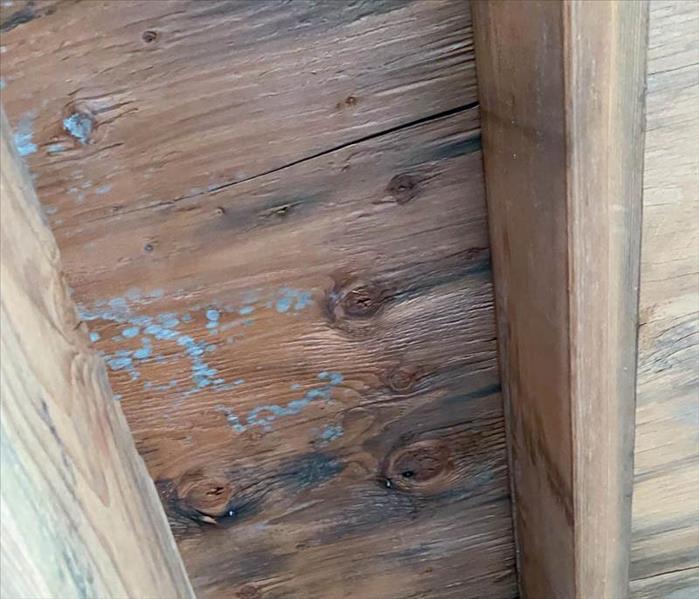 Identifying mold in your air ducts may not be obvious.
Identifying mold in your air ducts may not be obvious.
Your home in Pleasanton, CA is your sanctuary, and maintaining its air quality is essential for your comfort and well-being. One common issue that can impact the air you breathe is mold in air ducts. In this blog, we'll explore everything you need to know about this potential problem, how it happens, and what you can do to address it.
Understanding Mold in Air Ducts
Mold in air ducts is a concern for Pleasanton homeowners for several reasons. Mold thrives in damp, dark environments, and air ducts can provide the ideal conditions. When there's excess moisture present in your HVAC system, it can promote mold growth on the surfaces of your ductwork.
Identifying mold in your air ducts may not be obvious, but some indicators include musty odors, visible mold growth around vents, or an increase in allergy symptoms among your family members. If you notice any of these signs, it's essential to take action promptly.
The Dangers of Mold in Air Ducts
Mold in air ducts can present various risks, including:
- Reduced Air Quality: Mold spores can become airborne and circulate through your home, leading to compromised indoor air quality.
- HVAC System Efficiency: Mold growth in ducts can block airflow, making your HVAC system less efficient. This, in turn, can increase energy bills and the wear and tear on your equipment.
- Structural Damage: If left untreated, mold can corrode and weaken ductwork, leading to costly repairs or replacements.
Preventing Mold Growth in Air Ducts
You can take several measures to prevent mold in your Pleasanton home's air ducts. Schedule routine HVAC maintenance to keep your system in peak condition. This includes cleaning and inspecting your air ducts for signs of mold. Ensure your home is properly ventilated and keep humidity levels within the recommended range.
It is also crucial to fix any leaks or water damage promptly as mold relies on a source of water to grow and spread. Lastly, regularly change or clean your HVAC filters to prevent the buildup of debris that could contribute to mold growth.
Dealing with Mold in Air Ducts
If you suspect mold in your Pleasanton home's air ducts, here's what you can do:
- Contact SERVPRO® of Pleasanton/Dublin to conduct a thorough inspection. Our experts will identify the extent of the problem and recommend the appropriate remediation steps.
- If mold is present, professional remediation is crucial. We'll safely remove the mold and clean your air ducts to prevent its return.
- Our experts can also provide guidance on preventing future mold growth, including improving ventilation and addressing moisture sources.
Mold in air ducts is a concern for Pleasanton homeowners, but with awareness and preventative measures, you can maintain clean and healthy indoor air. Should you suspect or discover mold in your air ducts, don't hesitate to contact SERVPRO® of Pleasanton/Dublin. We are here to ensure your home's air quality is at its best, providing a healthier and more comfortable living environment.
Renters Insurance and Mold Damage: What You Need to Know
5/9/2023 (Permalink)
As a renter, it’s important to understand the role that renters insurance plays in protecting you from damages that can occur to your rental property. One of the most common types of damage is mold, which can be caused by a variety of factors. In this blog, we’ll explore what renters insurance covers when it comes to mold damage and what you need to know to protect yourself as a renter.
Does Renters Insurance Cover Mold Damage?
Whether or not renters insurance covers mold damage depends on the cause of the mold growth. If the mold is the result of a covered peril, such as a burst pipe or a leaky roof, then renters insurance will typically cover the cost of repairs and remediation.
However, if the mold is the result of negligence on the part of the renter, such as failing to report a leak or failing to properly ventilate the property, then renters insurance may not cover the cost of repairs and remediation.
It’s important to carefully review your renter's insurance policy to understand what is and isn’t covered when it comes to mold damage.
Prevention is Key
Preventing mold damage in your rental property is crucial in avoiding costly repairs and remediation. As a renter, there are several steps you can take to prevent mold growth in your rental property.
First, make sure to report any leaks or water damage to your landlord as soon as possible. Addressing these issues promptly can help prevent mold growth.
Second, make sure to properly ventilate your rental property. This includes using exhaust fans in the bathroom and kitchen and opening windows and doors to increase ventilation.
Third, regularly inspect your rental property for any signs of mold growth, such as a musty odor or visible mold. If you notice any signs of mold growth, report it to your landlord right away.
By taking these steps, you can help prevent mold growth in your rental property and protect yourself from costly repairs and remediation.
What to Do if You Find Mold
If you do find mold in your rental property, it’s important to take action immediately. This includes reporting the mold to your landlord and contacting your renter's insurance company to understand what is covered under your policy.
Your renter's insurance company may send an adjuster to inspect the mold damage and determine what is covered under your policy. It’s important to provide as much documentation as possible, including photos and receipts for any repairs or remediation that you have paid for.
In conclusion, understanding what renters insurance covers when it comes to mold damage is crucial in protecting yourself as a renter. Prevention is key when it comes to avoiding mold growth, and taking action immediately if you do find mold is important in minimizing damage and costs. Be sure to review your renter's insurance policy and take the necessary steps to protect yourself from mold damage.
Hidden Mold Locations in Commercial Facilities
3/21/2022 (Permalink)
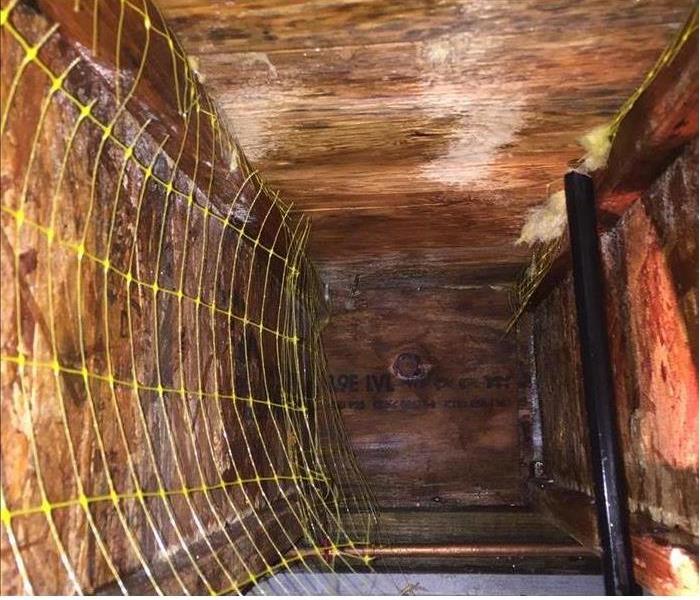 Mold growth does not always occur in obvious places. All the fungus needs is a dark and moist surface with organic nutrients.
Mold growth does not always occur in obvious places. All the fungus needs is a dark and moist surface with organic nutrients.
Hidden Mold Spots In Commercial Buildings
Mold growth does not always occur in obvious places. All the fungus needs is a dark and moist surface with organic nutrients. Unfortunately, most parts of a facility include these ingredients. You should thus regularly check your Dublin, CA, property for signs of the fungus. Mold commonly appears in the below areas, so be sure to inspect these locations vigilantly.
1. Wallboard
A flood or leak can quickly soak the wallboard in your building. Even condensation can create the moisture that encourages the spread of mold. If you remove the excess water in your building within two days, you may be able to salvage the wallboard. However, if the water physically damaged the wallboard, you will have to discard it.
2. Paper
You probably have storage rooms full of paper documents. Perhaps the paper is piled up in your hallway or closet, as well. Many of these locations feature the high humidity that mold loves. A leak that soaks these papers could cause mold growth, as well. Any papers that have been wet for more than 48 hours may require professional drying and cleaning. Papers that were exposed to the water for two days or fewer should be dried and photocopied before you discard them.
3. Ceiling Tiles
The tiles in your ceiling are fairly porous. This means they absorb the dirt and moisture that mold needs to grow. During your inspection, pay special attention to the tiles above HVAC vents. They often accumulate more moisture since they are in a humid part of the building. Tiles may also sustain water damage following a roof or pipe leak. Stains are evidence that the tiles have gotten wet. Any stains that you discover during your inspection should be investigated right away. If you find even a small amount of mold on your property, call restoration and cleanup professionals immediately. They can clean the affected areas and help prevent future mold growth.





 24/7 Emergency Service
24/7 Emergency Service